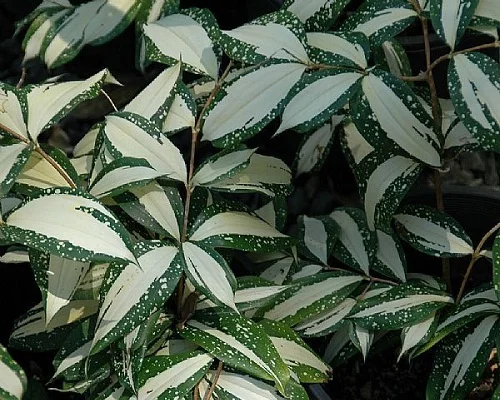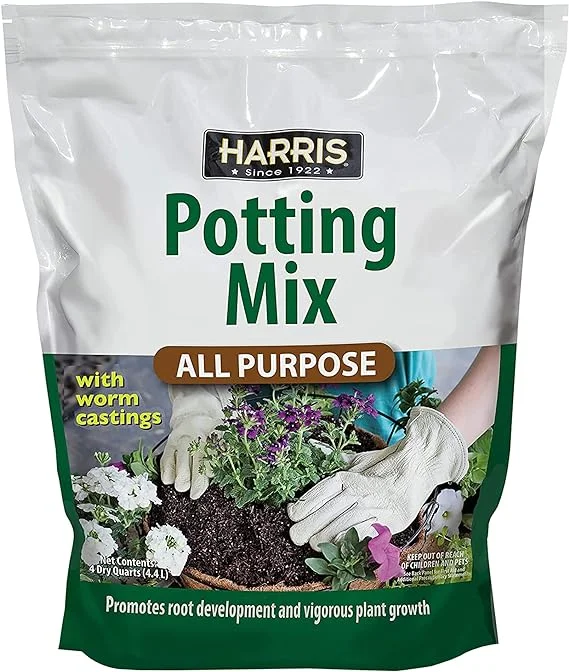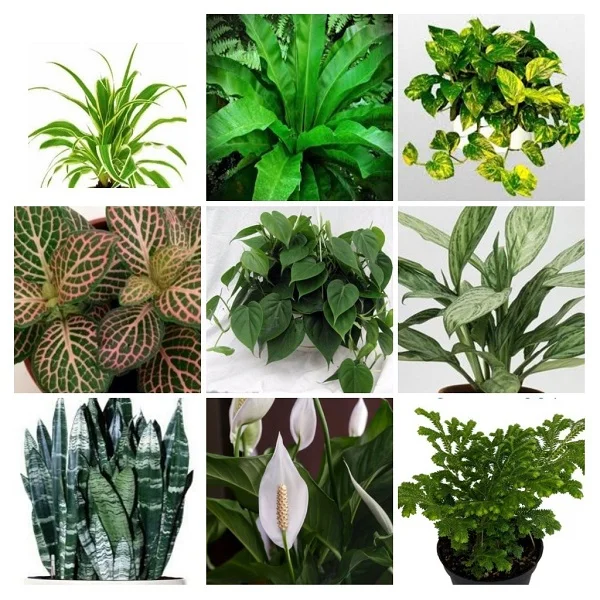Gold Dust Dracaena Plant (Dracaena godseffiana) Care Indoors, Problems and Remedies
Some links in this post may be affiliate links
Gold Dust Dracaena Plant (Dracaena godseffiana) grows best in bright indirect light, average warmth, above average humidity and consistently moist, rich, well-drained soil coupled with monthly feeding during the growing season.
Lets get to know some facts about this striking plant. Dracaena godseffiana also commonly called Spotted-Leaf Dracaena, Japanese Bamboo or Gold Dust Plant is the odd one among the Dracaena varieties as it is distinctly shrubby with broad, oval leaves rather than palm-like with long, grassy leaves. The leaves are bright green and spotted with yellow speckles.
Gold Dust Dracaena is easy to grow and is highly tolerant to a wide range of growing conditions, but it does not like to be exposed to intense sunlight. It is a very hardy plant and will tolerate heavy pruning and some level of neglect.

Botanical name: Dracaena godseffiana
Synonym: Dracaena surculosa
Family: Asparagaceae
Subfamily: Nolinoideae
Common names: Gold Dust Dracaena, Spotted-Leaf Dracaena, Japanese Bamboo, Gold Dust Plant
Origin
Dracaena godseffiana also called Dracaena surculosa is native to west and west-central tropical Africa, from Guinea to the Republic of the Congo.
Size
Dracaena godseffiana is a small-sized plant which grows to a height of about 2 feet. It is loved as one of the best plants for the limited spaces.
Varieties
Several varieties of Dracaena godseffiana are available. One variety is Dracaena godseffiana Florida Beauty which is more cream than green.
Other varieties are Dracaena godseffiana kelleri which bears more thicker leaves and Dracaena godseffiana Milky Way which has a creamish stripe in the middle of the leaf among many others.
Toxicity
Dracaena godseffiana is toxic to both humans and pets as indicated by ASPCA. Gold Dust Dracaena leaves and fruits contain alkyds which are toxic to humans, cats, dogs, horses and other animals. If ingested they can cause vomiting, diarrhea, drooling, loss of appetite and depression.
Where to Buy
Are you looking to add Dracaena surculosa to your collection? You may acquire these plants online from Etsy (Link to Etsy) or from Amazon (Link to Amazon).
Gold Dust Dracaena Plant Care Indoors
The Gold Dust Dracaena is a fantastic choice for both beginner and experienced plant owners. Its tropical aesthetic brings a lively, refreshing vibe to any indoor space, and with proper care, it can thrive for years.
Gold Dust Dracaena Plant flourishes in bright indirect light (dappled light), average warmth of 15-270C, high humidity of 60-70% and consistently moist, fertile, well-drained, all purpose soil coupled with monthly feeding during the growing season.
Dracaena godseffiana care only requires repotting when it has become extremely root-bound as it grows best when slightly pot-bound. Pruning is necessary to keep the plant neat, to reduce pest and disease infestations, to encourage a bushy growth and to rejuvenate growth. Lets explore the detailed care tips.

Watering
Water your Gold Dust Dracaena thoroughly during the growing season while allowing the top 1-2 inches of soil to dry out between waterings to keep the soil consistently moist.
Cut down on watering in the cold season to maintain the soil slightly moist as growth is minimal at this time. Do not let the soil dry out completely as it may lead to wilting and leaf drop.
Ensure that the pot has a drainage hole and the soil is free-draining to prevent it from getting soggy soil as it can lead to root-rot and yellowing of leaves.
Use water that is at room temperature and is free of chlorine, flourides and other chemicals to avoid getting brown leaf tips. Read more on how to water houseplants the correct way.
Light Requirements
Gold Dust Dracaena Plant grows best in bright indirect light (filtered light) infront of a large, brightly lit window. Keep it away from direct sunlight as it can scorch the leaves.
Make sure that the plant receives adequate light as too low light will cause loss of leaf variegation. You may grow Dracaena godseffiana under grow lights if the natural lighting is not sufficient. Check out these full spectrum grow lights on Amazon.
Regularly rotate the pot to ensure that the plant receives light on all sides for symmetrical growth and to prevent leggy growth. Check out this guide on understanding light for houseplants.
Temperature and Humidity
Dracaena godseffiana requires an average warmth of 15-270C. Keep it away from drafts as they can result in reduced growth and brown leaf tips and edges.
Dracaena surculosa thrives in a high humidity of 60-70%. Set the pot on a wet pebble tray or use a cool mist to up humidity. You may also grow the plant in a well-lit bathroom, kitchen and other humid places in the home. Learn more on how to increase humidity for houseplants.
Occasionally, clean the leaves by damp-wiping with a soft cloth to get rid of dust and also discourage pest infestations. Ascertain that there is good air circulation to prevent fungal diseases.
Potting Mix
Gold Dust Dracaena soil should be a rich, well-draining potting mix to prevent it from getting soggy while providing the required nutrients. All purpose potting mixes are ideal for this plant.
Fertilizer
Feed your Dracaena godseffiana every 4 weeks during the growing period with a balanced, water-soluble fertilizer to encourage a lush growth. Withhold fertilizer in the cold season as growth is minimal and feeding at this time can lead to fertilizer burn.
Occasionally flush out accumulated salts from the soil by running a stream of water through the soil until the water comes out through the drainage hole. Allow it to run for a few minutes and repeat several times. Read more on how to feed houseplants.
Repotting
Repot Gold Dust Dracaena at the beginning of the growing season when roots begin to grow through the drainage holes as it prefers to be slightly root-bound.
Repot into a pot one-size larger than the current one. Ensure that it has drainage holes to prevent the soil from getting soggy and never allow the roots to sit in soggy soil as it may result in root-rot. Take a look at these ceramic pots with drainage holes on Amazon.
Pruning
Pruning Gold Dust Dracaena involves removal of dead and yellow leaves to maintain the plant neat and discouarge pests and diseases. Regularly cutback the stems with a sharp, clean pair of pruning scissors to encourage a bushy and compact growth. The foliage emanating from the pruning, can be used to propagate new plants.
Propagation
Gold Dust Dracaena (Dracaena godseffiana) propagation is easily done at the beginning of the growing season from stem cuttings or by plant division.
Learn more on how to propagate Gold Dust Dracaena (Dracaena godseffiana)

Gold Dust Dracaena Problems
Gold Dust Dracaena problems include yellow leaves, brown leaf tips, leaf spots, plant dying, pests and diseases among others. Keep reading for more on these problems, their remedies and solutions.
Yellowing leaves
Gold Dust Dracaena yellowing leaves are caused by many and varied reasons. One reason is improper watering; either underwatering or overwatering.
Overwatering results in soggy soil which causes the roots to die. When the roots die, they cannot take up water and other nutrients required for the health of the plant. Therefore, the plant starts dying and this starts from the leaves, thus, the yellowing leaves.
Underwatering results in too little moisture in the soil and therefore the plant cannot absorb the nutrients required for healthy growth of the plant. Thus, the plant begins to die, beginning from the leaves which turn yellow and eventually drop.
Therefore, to prevent yellowing leaves, maintain the soil consistently moist at all times during the growing season. Reduce watering in the cold season and keep the soil slightly moist but never allow the soil ball to dry out completely.
Related: 14 Reasons for Dracaena Yellowing Leaves (Dracaena Yellow Leaves)
Pests
Common pests in Gold Dust Dracaena are mealybugs, scale insects and spidermites which mainly attack the weak plants. Therefore, ensure that your plant is healthy at all times to minimize pest attack.
Isolate the affected plant to prevent spread to other houseplants and treat it with neem oil and insecticidal soap. Take care to follow the manufacturer's instructions on the label.
Plant dying
Gold Dust Dracaena Plant is dying due to root-rot. The Dracaena is prone to root-rot if allowed to sit in soggy soil for too long. Ascertain that there is free drainage of both the soil and the pot to prevent the soil from getting soggy.
In addition, lessen watering in the cold season to keep the soil slightly moist as growth is reduced, thus, the plant does not require much water.
Keeping Spotted-Leaf Dracaena too cold will also kill it; maintain an average temperature of 15-270C in the growing season and a minumum of 100C in the cold season. Place the plant away from cold drafts like breezy doors and windows to prevent sudden drops in temperature. Check out this guide on understanding temperature for houseplants.
Another reason why Gold Dust Dracaena is dying is accumulation of salts in the soil. Flush out accumulated salts from the soil by regularly running a stream of water through the soil.
Brown leaf tips and yellow edges
There are four possible causes of brown tips and yellow edges in Gold Dust Dracaena. One possible cause is too dry air (too low humidity). To elevate humidity, set the pot on a wet pebble tray or use a cool mist humidifier. You can grow the plant a well-lit bathroom, kitchen or laundry area.
The second possible cause of brown tips and yellow edges in Spotted-Leaf Dracaena is underwatering. Keep the soil consistently moist during the growing season. Reduce watering in the cold season but do not allow the soil to dry out completely.
The third possible cause of brown tips and yellow edges in Japanese Bamboo is chemical accumulation in the soil. Only use chemical-free water to water the plant like rain water and regularly flush out salts from the soil.
The fourth possible cause of brown tips and yellow edges in Gold Dust Dracaena is cold drafts. Place it away from cold drafts like drafty windows and doors to maintain an average warmth with a minumum of 100C.
Bleached, dry leaf patches
Bleached, dry leaf patches in Gold Dust Dracaena are sunscorch marks caused by exposure of the plant to direct sunlight. Posistion the plant in a more shaded spot where it will receive bright, indirect light and protect it from direct sunlight to prevent sunscorching.
Soft and curled leaves with brown edges
Soft and curled leaves with brown edges in Gold Dust Dracaena are due to low temperatures. Maintain a cool to average room temperature and keep the plant away from cold drafts.
Brown leaf spots
Brown leaf spots in Gold Dust Dracaena are caused by underwatering. Maintain the soil moist at all times during the growing season and slightly moist in the cold season but never allow the soil ball to dry out completely.
Final thoughts
If you’re looking for a stunning, low-maintenance houseplant with a unique, speckled look, Gold Dust Dracaena is a perfect choice. Whether you keep it as a desk plant, shelf accent, or statement piece, this plant adds natural beauty to any home.
By following this care guide, you’ll ensure that your Dracaena godseffiana thrives year-round with lush green foliage and vibrant yellow speckles.
Frequently Asked Questions
1. Is Gold Dust Dracaena easy to care for?
Yes! Gold Dust Dracaena is a low-maintenance plant that thrives in bright, indirect light and requires moderate watering.
2. How do you care for Gold Dust Dracaena?
- Position your Gold Dust Dracaena infront of a large, brightly-lit window where it will receive bright indirect light away from direct sunshine.
- Give your Gold Dust Dracaena a warmth of 15-270C and keep it away from cold and hot drafts to avoid extreme temperatures.
- Grow the plant in rich, moderately moist, well-drained soil and maintain the soil slightly moist in the cold season but never allow the soil to dry out completely.
- Feed your Gold Dust Dracaena monthly with a balanced, water-soluble fertilizer during the growing season but do feed in the cold season.
- Maintain a room humidity of 60-70%. Set the pot on a wet pebble tray or use a cool mist to increase humidity. You may also grow your Gold Dust Dracaena in a well-lit bathroom, kitchen and other humid places in the home.
- Repot your Gold Dust Dracaena at the beginning the growing season only when it is becomes pot-bound.
- Regularly remove dead foliage to maintain the plant neat and also minimize pest and disease infestations.
- Cutback the leggy and strangly stems to rejuvenate growth and control growth of your Gold Dust Dracaena.
- Regularly inspect your plant for mealybugs, scales and spidermites and take timely control measures.
3. Can Gold Dust Dracaena grow in low light?
Yes, but Gold Dust Dracaena will grow more slowly and may lose some of its vibrant yellow speckles
4. How long does Gold Dust Dracaena live?
With proper care, Gold Dust Dracaena can live for many years, making it a great long-term houseplant
5. Why are my Gold Dust Dracaena’s leaves turning brown?
Gold Dust Dracaena brown leaves are usually caused by low humidity, dry soil, or exposure to chemicals in tap water. Try using filtered water and increasing humidity.
6. Why are the leaves of my Gold Dust Dracaena leaves turning yellow?
Gold Dust Dracaena leaves may turn yellow due to overwatering, underwatering, root-rot, inadequate light, poor feeding, wrong temperature, pests and diseases.
7. Why is my Gold Dust Dracaena dying?
Your Gold Dust Dracaena may be dying from overwatering (soggy soil), too little light, exposure to direct sunlight (scorching), low humidity, extreme temperatures from drafts, improper feeding, pests and diseases.
You liked it? Share on social media.
Related Content
Amazon Associates Disclosure
Homeplantsguide.com is a participant in the Amazon Services LLC Associates Program, an affiliate advertising program designed to provide a means for sites to earn advertising fees by advertising and linking to amazon.com.





